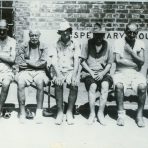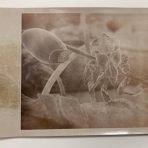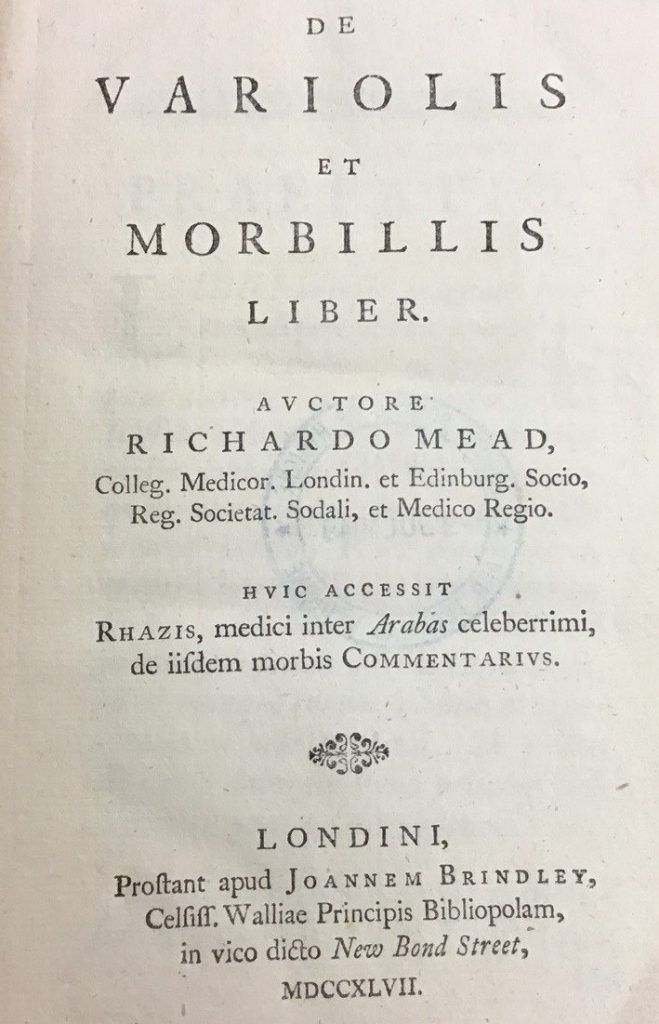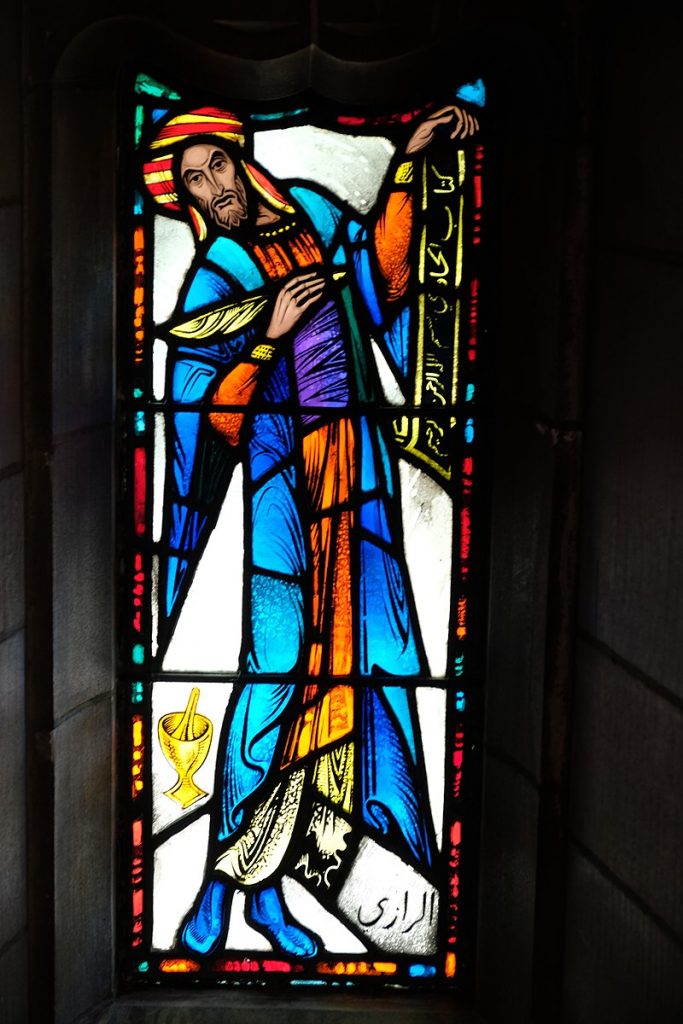
Rhazes (full-name: Muhammad ibn Zakariyā al-Rāzī) made notable contributions to many areas of medicine. His manuscripts, carefully preserved down the centuries, were among the first medical books printed in Europe in the 15th century. After translation into Latin Rhazes’s writings became widely disseminated and were to influence the future direction of modern medicine.
Rhazes wrote the first known medical description of smallpox in about 910 AD. He described the symptoms, proposed a theory for the pathology and gave directions for the treatment of the condition. He stated that survival from smallpox infection prevented an individual from acquiring the disease again. His explanation is the first theory of acquired immunity.1 The LSHTM Library holds copies of four books by Rhazes on smallpox.
John Channing (c1703-1775), an English pharmacist, published the first edition of the Arabic text with a parallel Latin translation under the title: De variolis et morbillis in 1766.
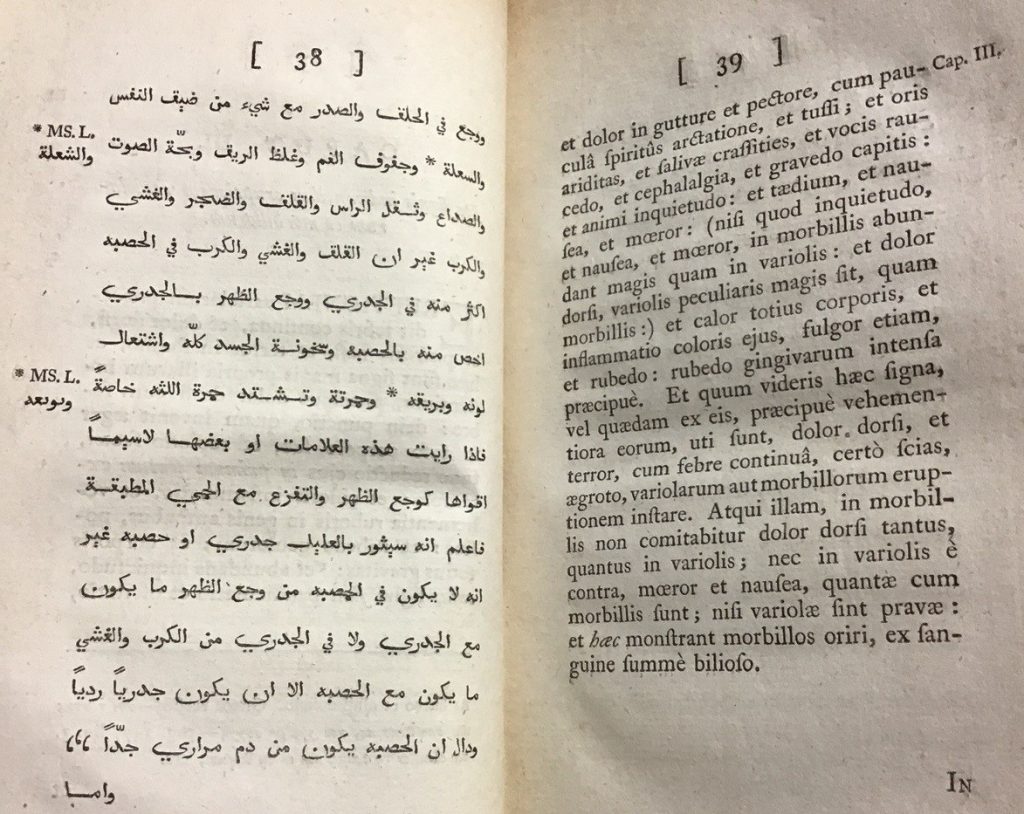
Earlier, Richard Mead (1673-1754), physician, in 1747 issued a treatise on smallpox: De variolis et morbillis liber that included a Latin translation of Rhazes’s work. The following year, 1748, a translation into English was published, and a second edition in 1755 (Mead, 1755).
In 1848 the Sydenham Society, a society set up to promote the accessibility of medical literature by reprinting classical medical texts, commissioning translations of European medical works and by the issue of new titles, published a new edition of Rhazes translated into English from the Arabic by William Alexander Greenhill (1814-1894). Greenhill was a physician and sanitary reformer who had studied Arabic and Greek and was well qualified to edit a new edition under the title A treatise on the smallpox and measles. This scholarly book reviews the history of the publications of Rhazes on smallpox from the 15th century.
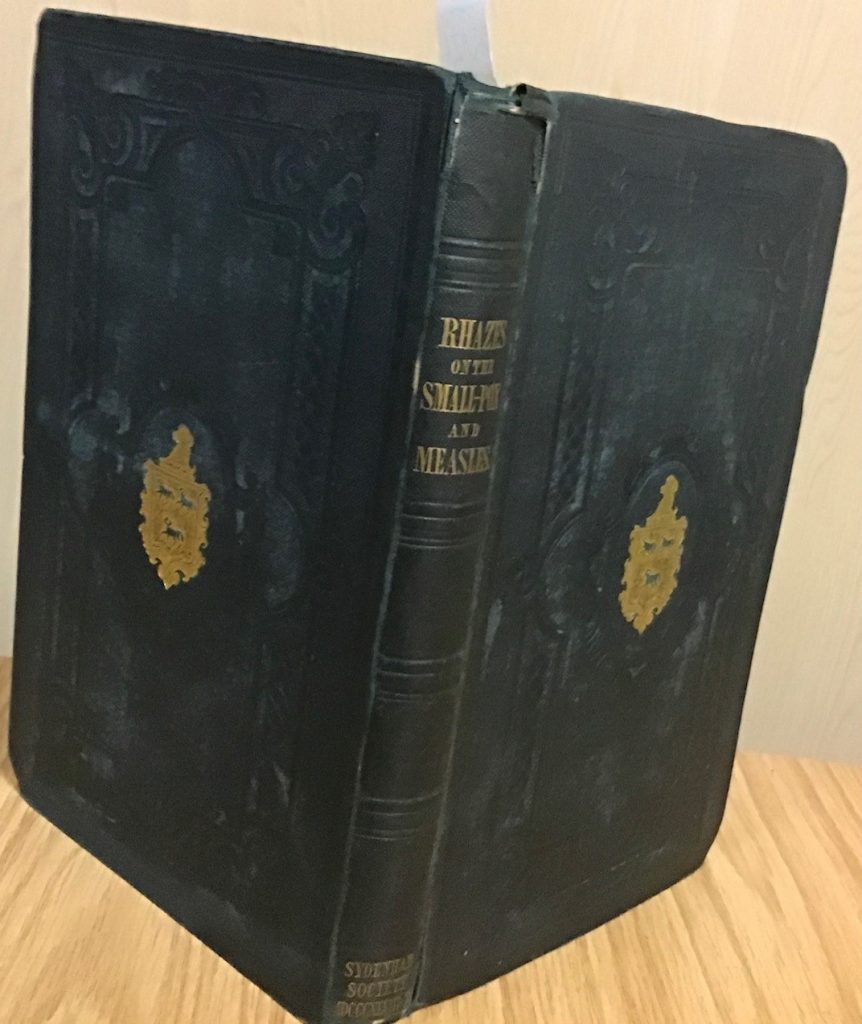
Notes
- Garrison & Morton 2527.99; 5404; also 5417, 5441 online (viewed 5/1/2022).
References
BEHBEHANI, Abbas M., 1984. Rhazes : the original portrayer of smallpox. JAMA 252 (No. 22) : 3156-3159. Available online: file:///C:/Users/alibadat/Downloads/jama_252_22_033%20(2).pdf
GARRISON, Fielding H. & MORTON, Leslie T. History of Medicine and the Life Sciences database. Usually referred to as Garrison and Morton which can be searched at https:/www.historyofmedicine.com/
MEAD, Richard, 1747. De variolis et morbillis liber. … Rhazis, medici inter Arabas celeberrimi, de iisdem morbis Commentarius. Londini : Joannes Brindley. xvi, 197 pages. (Reece Collection 1747); available online https://archive.org/details/b30545584_0002/page/n6
MEAD, Richard, 1755. A discourse on the small pox and measles. … To which is annexed A treatise on the same diseases, by the celebrated Arabian physician Abu-Beker Rhazes. The whole translated into English, under the Author’s inspection, by Thomas Stack. Second edition. London : J. Brindley. xvi, 204 pages. (Reece Collection 1755).
RHAZES, 1766. De variolis et morbillis, arabice et latine; … cura et impensis Johannis Channing. Londini : Guilielmus Bowyer. xiv, [2], 276 pages. (Reece Collection 1766).
RHAZES, 1848. A treatise on the small-pox and measles. Translated from the original Arabic by William Alexander Greenhill. London : Sydenham Society. viii, 212 pages. Includes a ‘List of the officers and members of the Sydenham Society’. (Reece Collection 1848); digital facsimile : https://iiif.wellcomecollection.org/pdf/b21301943 (viewed 19/1/2022)
MEAD on smallpox. King’s College, London. Special Collections Exhibitions. Online exhibitions. The great leveller : humanity’s struggle against infectious disease. Mead on smallpox: https://kingscollections.org/exhibitions/specialcollections/great-leveller/smallpox/mead-on-smallpox
Some copies of Rhazes’s books were acquired with the Reece Collection – a collection of books and pamphlets on smallpox and vaccination built up by Dr. Richard James Reece (1862-1924), a medical inspector with the Local Government Board. Part of the collection was sold to LSHTM in 1925. In 1930 Dr Hugh Macewan donated the remainder. The collection consists of 381 books, 30 volumes of pamphlets, 53 volumes of press cuttings (1881-1902) and eight boxes of pamphlets.
LSHTM Library Rare Books Collection Blogs is an occasional posting highlighting books that are landmarks in the understanding of tropical medicine and public health. The Rare Books Collection was initiated by Cyril Cuthbert Barnard (1894-1959), the first Librarian, from donations and purchases, assisted with grants from the Carnegie United Kingdom Trust. There are approximately 1600 historically important rare and antiquarian books in the Rare Books Collection.
Many of the LSHTM Library’s rare books were digitized as part of the UK Medical Heritage Library. This provides high-quality copyright-free downloads of over 200,000 books and pamphlets for the 19th and early 20th century. To help preserve the rare books, please consult the digital copy in the first instance.
If the book has not been digitized or if you need to consult the physical object, please request access on the Library’s Discover search service. Use the search function to find the book you would like to view. Click the title to view more information and then click ‘Request’. You can also email library @lshtm.ac.uk with details of the item you wish to view. A librarian will get in touch to arrange a time for you to view the item.
Researchers wishing to view the physical rare books must abide by the Guidelines for using the archives and complete and sign a registration form which signifies their agreement to abide by the archive rules. More information is available on the Visiting Archives webpage.


